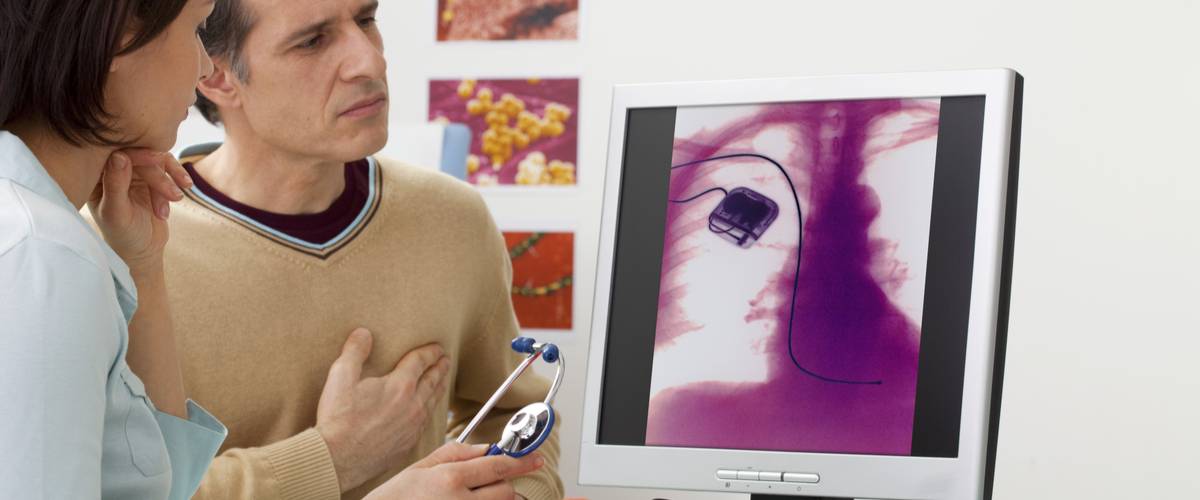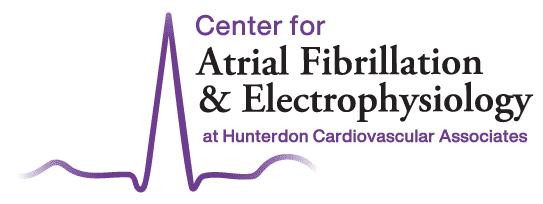
What is a Pacemaker?
A pacemaker is a small electronic device, usually implanted in the chest below the collarbone, that helps regulate electrical problems within the heart. It signals the heart to beat when the heartbeat becomes irregular, too slow or too fast.
A pacemaker is composed of two parts:
- Pulse generator – This small metal case contains a small computer, circuitry, and a battery. The pulse generator regulates the impulses sent to the heart.
- One or more leads – Leads are wires connected to the pulse generator on one end and inside one of the heart’s chambers on the other end. The lead is the part that delivers electrical impulses to the heart. Leads also sense the heart’s electrical activity and gather and send this information to the pulse generator.
Why Do Some People Need a Pacemaker?
The heart operates via a complex electrical conduction system. When problems occur with this system, a pacemaker is one solution to regulating the timing of the electrical stimulation of the heart to achieve a safe and more normal heart rate. A pacemaker is often recommended to ensure the heartbeat does not slow to a rate that is dangerous. It is also recommended when other treatments like medication have not worked.
Heart rhythm problems affect the entire body because they cause an inability to adequately pump blood to the rest of the body. A too slow heart rate causes the blood to be pumped too slowly. A fast or irregular heart rate causes the heart’s chambers to not fill with enough blood to pump out with each heartbeat. When these heart rate irregularities happen, the body does not receive enough blood and symptoms such as fatigue, fainting, dizziness and angina (chest pain) may occur.
Some examples of heart rate and rhythm problems indicating the need for a pacemaker include:
- Bradycardia – the heart rate is too slow
- Tachy-brady syndrome – the heart rate alternates between fast and slow beats
- Heart block – electrical signals are delayed or blocked in the heart
Is Pacemaker Implantation a Major Surgery?
A pacemaker implantation is a routine surgery; however, as with all surgeries, it carries risk of infection and complications. It may be performed as an outpatient procedure or may require a stay in a hospital. The exact surgical procedures also vary depending on the patient’s condition and the surgeon’s practices.
General Procedure
- An intravenous (IV) line will be started prior to the procedure for injection of medication and IV fluids.
- Using small, adhesive electrodes, the patient is connected to an electrocardiogram (ECG or EKG) monitor to record and monitor the electrical activity of the heart during the procedure.
- Large electrode pads are then placed on the back and on the chest.
- A sedative medication will be given through the IV to help the patient relax, though most patients remain awake during the procedure.
- A local anesthetic will be injected at the pacemaker insertion site. Once it has taken effect, a small incision is made.
- The lead wire requires a sheath, a plastic tube, to be inserted into a blood vessel, often under the collarbone. The lead wire is guided through the sheath into the heart.
- Once inside the heart, the lead wire is tested to verify proper location and that it is working. Up to three lead wires may be inserted depending on the type of pacemaker chosen.
- The generator is then placed under the skin through the incision after the lead wire is attached to the generator. The ECG will be used to ensure the device is working correctly.
- The incision is closed and bandaged.
What Happens After Pacemaker Implantation?
After the surgery, vital signs are monitored. Any chest pain or tightness should be reported immediately. Following a period of bed rest, blood pressure is checked while lying in bed, sitting and standing. Patients should move slowly at first to avoid dizziness.
Because general anesthesia is not used for pacemaker implantation, eating and drinking is allowed after surgery. Some soreness or pain at the insertion site is normal and pain medication may be taken if necessary. Post-operative instructions will be provided and once all vital signs are stable, patients may go to their hospital room or will be discharged to go home.
Post-op at Home
After the procedure, your doctor will provide instructions for caring for your incision, including bathing and activity restrictions.
If any of the following symptoms occur, the doctor should be contacted immediately:
- Increased redness
- Increased swelling
- Increased warmth
- Increased tenderness
- Opening of the incision
- Drainage at the incision site
- Fever
The doctors and staff at The Center for Atrial Fibrillation and Electrophysiology at HCA are devoted to our patients and to the commitment of providing quality patient care on all levels. If you are experiencing symptoms of heart rhythm abnormality or have been advised that you need a pacemaker, please contact us or call us at 908-806-0190.
